Sean McBride's Blog, page 6
December 15, 2022
Blind Read Through: J.R.R. Tolkien; The Silmarillion, Of The Rings of Power and the Third Age

“It is said that the towers of Emyn Beraid were not built indeed by the Exiles of Númenor, but were raised by Gil-galad for Elendil, his friend; and the Seeing Stone of Emyn Beraid was set in Elostirion, the tallest of the towers. Thither Elendil would repair, and thence he would gaze out over the sundering seas, when the yearning of exile was upon him; and it is believed that thus he would at whiles see far away even the Tower of Avallónë upon Eressëa, where the Master-stone abode, and yet abides. These stones were gifts of the Eldar to Amandil, father of Elendil, for the comfort of the Faithful of Númenor in their dark days, when the Elves might come no longer to that land under the shadow of Sauron. They were called the Palantíri, those that watch from afar; but all those that were brought to Middle-earth long ago were lost. (pg 290)”
Welcome back to another Blind Read! Whew, that was a long introductory quote! This week we progress into the places, deeds, and constructs of the Third Age as we get closer to the events of The Lord of the Rings.
We pick up right where we left off last week, with the creation of the Nazgûl, because “Sauron’s lust and pride increased, until he knew no bounds, and he determined to make himself master of all things in Middle-earth. (pg 287)”
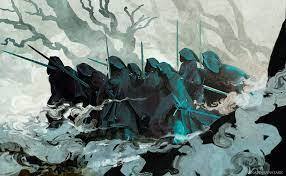
Sauron’s shadow began to spread across Middle-earth, and he ruled with an iron fist, crushing any small insurrections before they could start. He oversaw the Orcs, and they “multiplied like flies. (pg 288)”
However, this era was still prosperous for the people of Middle-earth, and Sauron would not cross Ered Luin. “Gil-Galad was aided by the Númenóreans. (pg 288)” and so Sauron knew, even with his mighty garrison of Orcs, that he could not withstand the two races who had aligned against him.
It was at this time in History that the Númenóreans challenged Sauron, and as we learned in Akallabêth, he “left Middle-earth for a while and went to Númenor as a hostage of Tar-Calion the King. (pg 288)”
After the Drowning of Númenor, Sauron fell into the Abyss, but his spirit flew back to Middle-earth where he found Gil-Galad had taken over and made a wonderful kingdom of much of Middle-earth. So Sauron “withdrew to his fortress in the Black Land and meditated war. (pg 288)” as the Third Age began.
During this time of the great Flood that destroyed Númenor, the Faithful, Númenóreans who still believed in the Valar and the Eldar, sailed to Middle-earth. “The chief among these were Elendil the Tall and his sons, Isildur and Anárion. (pg 288)”
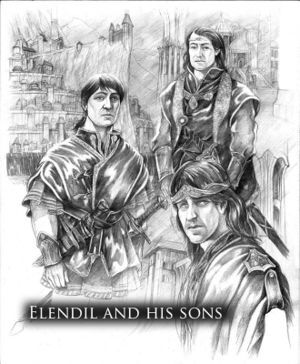
It was in Middle-earth that Elendil befriended the Elven King Gil-Galad, and had the freedom to settle in Eriador and create new kingdoms and structures. They built great towers in Emyn Beraid, “and there remain many barrows and ruined works in those places. (pg 289)” Probably the most memorable for casual readers/viewers would be the tower on Amon Sûl, otherwise known as Weathertop.
Elendil’s sons went south, “and they established a realm in those lands that were after called Gondor. (pg 289)” Aragorn, considered the king of men because his bloodline comes directly from Elros (Elrond’s brother) half-blood, is the direct descendant of Isildur. So Elrond is Aragorn’s uncle; if you put about 89 greats in front of Uncle, that is.
The Númenóreans were still a sea-faring people, so they created the most significant city along a great river, a city they named Osgiliath, with a great bridge to allow their spectacular ships to sail beneath. This structure is the Bridge destroyed in “The Return of the King,” and Osgiliath is the city Faramir is trying to defend from the Orc scourge.
They also built two prominent towers: “Minas Ithil, the Tower of the Rising Moon, eastward upon a shoulder of the Mountains of Shadow as a threat to Mordor; and to the westward Minas Anor, the Tower of the Setting Sun. (pg 289)” Remember these names. These become very important in everything that comes afterward.
Isildur settled into Minas Ithil, where Anárion settled into Minas Arnor, “but they shared the realm between them, and their thrones were set side by side in the Great Hall of Osgiliath. (pg 289)” Their towers were also set to either side of the great city, setting up the major areas of early Gondor, but they were not the only dwellings.
The Númenóreans also built many other cities, including the circle of Angrenost, otherwise known as Isengard, and the tower they built there was known as Orthanc. This is the tower where the Istari (wizard Maiar) Saruman took up abode.
Beyond the buildings, “Many treasures and great heirlooms of virtue and wonder the Exiles had brought from Númenor; and the most renowned were the Seven Stones and the White Tree. (pg 290)” Otherwise known as the Palantíri (the seeing stones) and the seed of Nimloth, which Isildur nearly died obtaining.

The seeing stones “Three Elendil took, and his sons each two. (pg 290).” Elendil set his in the towers of Emyn Beraid, on Weathertop, and the city of Annúminas. Isildur placed his in Minas Ithil and at Orthanc, and Anárion put his at Minas Arnor and Osgiliath.
These seeing stones were intended to be a balm against the darkness Sauron held in the land, but at this time in History, he was still trying to build power, so the significant structures of the Númenóreans in Middle-earth didn’t feel his presence often. Only Elendil realized the turn of the tide and understood the power of the Palantíri. He knew that if Sauron got his hands on those, his presence could reach far more deeply than ever. He saw Pharazôn be corrupted by only words, creating the downfall of Númenor. What if Sauron could control the visions the Great Kings of the Third Age were seeing and make them think they were all real? This would be far more pervasive than just playing to one’s Hubris.
The sons, however, one more step removed from the purity of their bloodline, believed in using these seeing stones for their power and protection of their people. So the seeing stones stayed where they were set. Orthanc fell into Saruman’s hands, and the power corrupted him (amongst other things), and Osgiliath, we know, stood until the end of the Third Age. But what of the other two towers? We have not seen the names Minas Ithil and Minas Arnor yet. Where do those come in?
Join me next time to find out!
Next week we’ll cover the penultimate episode of The Rings of Power before diving back into “Of the Rings of Power and the Third Age.”
December 8, 2022
Blind Watch: The Rings of Power; Episode 6, Udûn
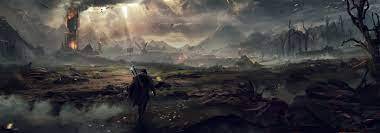
“My children, we have endured much. We cast off out shackles. Crossed mountain, field, frost, and fallow, till out feet bloodied the dirt. From Ered Mithrin to the Ephel Arnrn, we have endured. Yet tonight, one more trial awaits us. Our enemy may be weak, their numbers meager…yet before this night is through, some of us will fall. But for the first time, you do so not as unnamed slaves in far-away lands, but as brothers. As brothers and sisters in our home! This is the night we reach out the iron hand of the Uruk…and close our fist around these lands.“
Welcome back to another Blind Watch! This week we cover Episode six of The Rings of Power, Undûn. The episode is fast-paced and fun to watch, but there is very little content in this episode based on the core material.
This episode focused solely on the southland’s battle for survival against the orcish horde and showed the treachery of men wooed by Sauron’s power delicately and subtly. But it also shows how people can hold onto hope nearly as well as Peter Jackson did in “The Lord of the Rings.”
We start the episode with the Orcs storming the tower. The Southlanders have fled, and Arondir stays behind to lay traps for the scourge.
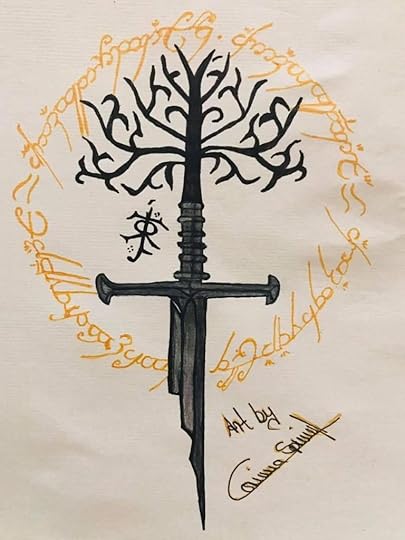
It’s here, Waldreg, the human who betrayed his kinsmen and ran off to join Adar shows his concern for the Orc Captain, but there is something strange about his motivations. He follows Adar fervently, but we don’t know why he does this. Earlier in the season, he shows the mark on his arm. He gained that mark from using the hilt which becomes a sword from his blood, but where did he get the hilt? Why did he lose it, and where did Theo get it? Was Waldreg previously a soldier in Sauron’s armies and used the blood sword? Has he been a spy all these years? Unfortunately, they haven’t given us enough to make a proper conclusion.
We then transition to Galadriel and the Númenóreans on the ship on their way to help the Southlands. They show a bit of interaction between Galadriel and Isildur, where Isildur says, “I was just trying to get away. As far as I could from that place.“
Isildur wanting to leave Númenor is actual history, but it takes place before the events in the show. Isildur was trying to get away from Númenor, but it wasn’t until after he was already a hero for taking the fruit of Nimloth and saving the tree’s offspring from the evil of Sauron and Pharazôn. Isildur was gravely injured because of his heroism and “went out by night and did a deed for which he was afterwards renowned.” The problem I have, is that he has already left Númenor, so if the showrunners decide this event is to be his redeeming deed, then they need to find some way to bring him back to Númenor before the great flood.
The remainder of the episode takes place in the Southlands. The Humans all retreat to the town and set up an ambush for the Orc army, who attacks them at night. They successfully attack and push back the Orcs but find that most of the beings they killed were, in fact, their fellow humans who left town to join Adar. These humans are just in disguise, made up to look like Orcs.
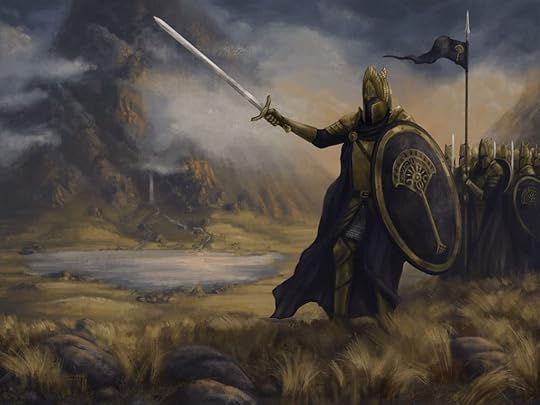
Once this realization happens, the actual garrison of Orcs attacks the humans, only to be pushed back again by the Númenóreans, who have the best possible timing.
If you weren’t paying attention, however, you might miss Adar saying, “Waldreg, I have a task for you.“
The Númenóreans go onto a glorious victory, at least it seems. We see Waldreg finds the broken hilt, and he places it in some lock which activates a flood.
The flood goes all the way through to what I can only imagine is Mount Doom, where Sauron forged the One Ring. Then, the water creates a chain reaction which causes a significant eruption.
You might wonder why the episode is called Udûn. It’s the Elvish word for Hell or Dark Pit. The tunnels that the Orcs had been tunneling weren’t just searching or trying to seek something. It was that because they wanted the hilt, but they were also making tunnels so the water released by the hilt key would create a chain reaction that would cause hell on earth for the humans. Fireballs and magma fill the ground, and it’s a more extensive form of destruction that hasn’t been seen since Ancalagon the Black crushed mountain tops underneath its claws (an enormous dragon ever to live in Middle-earth and servant to Morgoth). What is even more devious is that Udûn is Sindarin Elvish, which proves the point that these Orcs were indeed transitioned from Elves to these creates because of Sauron’s corruption. Udûn is also the name of the region just beyond the black gate of Mordor. Coincidence?
So there is just one question remaining. Arondir tries to destroy the hilt key earlier in the episode, but the hammer he uses breaks instead.
What can this blade be but Gurthang, the sword of Turin Turambar? Turin is a hero of legend in the first age, surrounded by bad luck. His sword was Gurthang, which he used to slay many powerful creatures, including Glaurung, Morgoth’s Dragon Captain. Unfortunately, Turin killed himself once he realized he was married to his sister (who killed herself just before he did the deed), and the blade broke asunder after that happened, which is the only way the sword could be broken. Gurthang was a sentient sword, and there is a prophecy (interesting prospect in a show heavily leading on the sign laden Palatirí) where Turin will use Gurthang in the Final Battle to kill Morgoth for infinity.
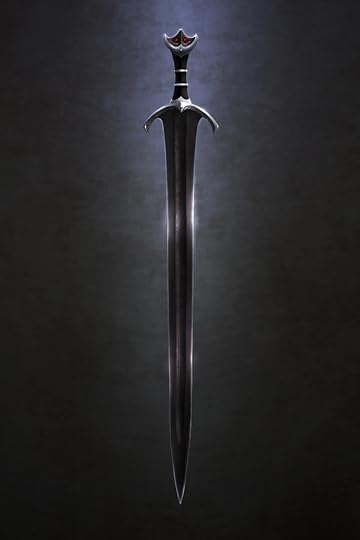
I could see the showrunners using Gurthang as a key to release Sauron from the trappings of his spirit form and return him to his mortal form.
This is the blade, after all, that feeds off blood and remembers its kills.
So despite the lack of history in the last few episodes, I am excited about where this is going because if I’m right about this sword being Gurthang, it opens up whole new worlds of history to be exposed. There will be considerably more people who have never read The Silmarillion exposed to its lush history.
So join me next week and experience some of that history as we continue with “Of the Rings of Power and the Third Age!”
December 1, 2022
Blind Read Through: J.R.R. Tolkien; The Silmarillion, Of The Rings of Power and the Third Age, part 1
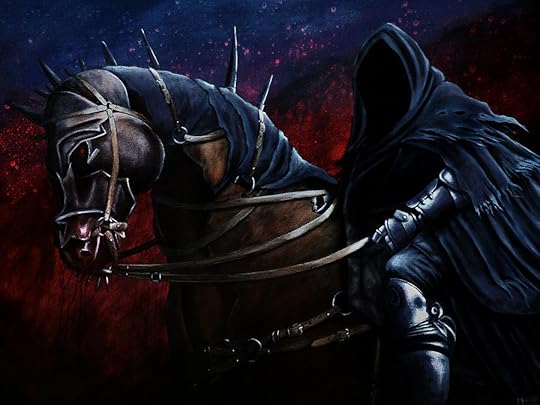
“But Sauron gathered into his hands all the remaining Rings of Power; and he dealt them out to the other peoples of Middle-earth, hoping thus to bring under his sway all those that desired secret power beyond the measure of their kind. Seven rings he gave to the Dwarves; but to Men he gave nine, for Men proved in this matter as in others the readiest to his will.“
Welcome back to another Blind Read! This week we start the last chapter of The Silmarillion and learn how the events of The Lord of the Rings came to be.
Tolkien begins this chapter by describing Sauron himself. Sauron was a Maia, one of the servants of the Valar, and just a half step down in power from them. Melkor seduced Sauron with his power and led him to serve the Dark Lord, but when Melkor was defeated, he begged forgiveness. Then, when it was clear that no quarter would come, he “hid himself in Middle-earth; and he fell back into evil, for the bonds that Morgoth had laid upon him were very strong.”
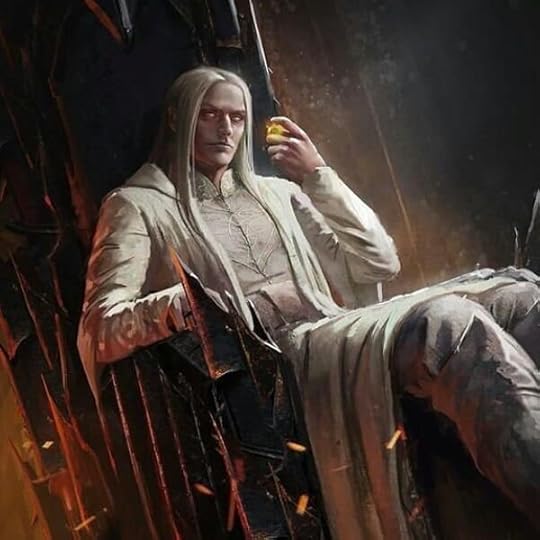
I contend that Sauron is much more evil than Morgoth (Melkor) because Melkor’s goal wasn’t ultimate power; instead, his story falls much more in line with Lucifer Lightbringer, who was an angel but pride made him feel slighted, which created his fall. Sauron chose evil from the beginning. There was never anything in him that tried to be or do good; his entire existence was about deception and power.
This whole chapter is basically about Sauron and his influence on how he corrupted the Rings of Power to gain control over the people of Middle-earth and what those people did to fight against him.
Tolkien tells us the land beneath Ossiriand on the eastern side of what was once Beleriand was re-formed by the surging of rivers and shifting of the ground. The region is now called Lindon, where many Elves settled to live.
Those that didn’t live there posted up in a region to the west of Khazad-dûm named Eregion. “In Eregion the craftsmen of the Gwaith-i-Mírdain, the People of the Jewel-smiths, surpassed in cunning all that have ever wrought, save only Fëanor himself; and indeed greatest in skill among them was Celebrimbor, son of Curufin, who was estranged from his father and remained in Nargothrond when Celegorm and Curufin were driven forth, as is told in the Quenta Silmarillion.“
Meanwhile, Sauron was growing in power and steering clear of Lindon. In fact, “elsewhere the Elves received him gladly, and few among them hearkened to the messengers from Lindon bidding them beware; for Sauron took himself a name of Annatar, the Lord of Gifts, and they had much profit from his friendship.”
Much like the Númenóreans, these Noldor of Eregion had their pride get in the way. They let Annatar give them advice on how to create, how to live, and how to rule. They even “refused to return into the West, and they desired to stay in Middle-earth.”
“In those days the smiths of Ost-in-Edhil surpassed all that they had contrived before; and they took thought, and they made Rings of Power.” Moreover, they did so under Sauron’s guidance, taking his advice in the Rings’ creation.
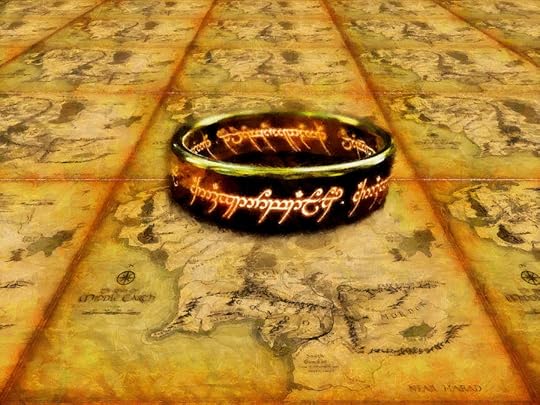
The Elves created many of these Rings, “but secretly Sauron made One Ring to rule all others, and their power was bound up with it, to be subject wholly to it and to last only so long as it too should last.” I think anyone who is reading this has heard of this Ring before. The One Ring allowed Sauron to rule and influence the decisions of those who wore the lesser rings.
But the Elves immediately understood their gaff: “As soon as Sauron set the One Ring upon his finger they were aware of him; and they knew him, and perceived that he would be master of them, and all they wrought.”
The Elves took off their rings and hid them away, but Sauron could feel them, and in his great wrath, he waged war against the Elves to take the rings back, “But the Elves fled from him; and three of their rings they saved, and bore them away, and hid them.“
They saved the rings of the greatest power, Narya, Nenya, and Vilya.
Narya was called the Ring of Fire and inlaid with a Ruby. Nenya was called the Ring of Water and inlaid with adamant, and Vilya was called the Ring of Air and inlaid with a sapphire.
The rings could “ward off the decays of time and postpone the weariness of the world.” But they were kept secret and not worn while Sauron wore the One Ring. “Therefore, the Three remained unsullied, for they were forged by Celebrimbor alone, and the hand of Sauron had never touched them.”
However, Sauron never gave up his quest for power over the rings and battled against the Noldor incessantly. During this time, “Eregion was laid to waste, and Celebrimbor slain, and the doors of Moria were shut. (Celebrimbor sealed the gates of Moria using Mithril and Elven magic. These are the gates we see the fellowship open in “The Fellowship of the Rings” by speaking the Elvish word for Friend).”
Because Sauron was raging so hard against the Elves, Elrond founded Rivendell as a sanctuary, as a way to rally against Sauron. It is here we get the opening quote to this essay.

The Rings given to the Dwarves were of Gold, matching their heart’s greed. These golden rings kindled the evil of profits in their hearts and they hoarded Gold, “but all these hoards long ago were plundered, and the Dragons devoured them.“
Men took nine of the rings, which gave them eternal life, “yet life became unendurable to them.” Then eventually, “they could see things in worlds invisible to mortal men; but too often they beheld only the phantoms and delusions of Sauron.“
The nine men who held the Rings fell into thralldom to Sauron, “And they became for ever invisible save to him that wore the Ruling Ring, and they entered into the realm of shadows. The Nazgûl were they, the Ringwraiths, the Enemy’s most terrible servants; darkness went with them, and they cried with the voices of death.“
Join me next week for a breakdown of Episode 6 of The Rings of Power before we jump back into the next section, “Of the Rings of Power and the Third Age!”
November 24, 2022
Blind Watch: The Rings of Power; Episode 5, Partings
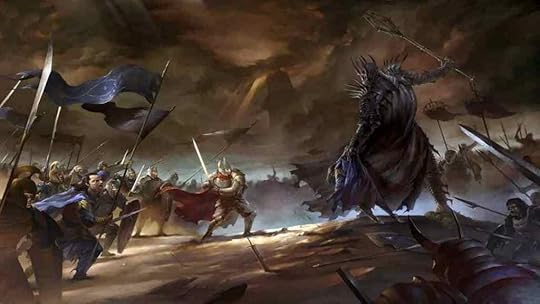
“Name it. I beg you. See? You were right to watch us, because we are destined for the darkness. It’s how we survive. Perhaps, it’s who we are. Who we will always be.“
Welcome back to another Blind Watch! We’re back for episode 5, “Partings.” Partings indeed! This episode was the showrunners doing their best to make an action show and divert from the core material. The characters are all the same, but the events and the characters are entirely different from the books. Not that this is a bad thing. The show is still beautiful and entertaining, and it is just quickly becoming a very highly funded fantasy show, instead of a Tolkien based show.
Let’s dig into it, shall we?
They follow three main storylines in this episode; The Númenóreans, the Southlanders, and the Dwarves mining Mithril.
I want to start with the story about the Southlanders because this is the one storyline that is not rooted in the source material. So why would I cover it, then? Specifically for two reasons. The first is the “key” hilt which Theo found. I still think this is Gurthang, Turin Turambar’s sword, which makes sense because there is a good possibility that these Southlanders could be descendants of Turin, but the question is, why would Adar want it?
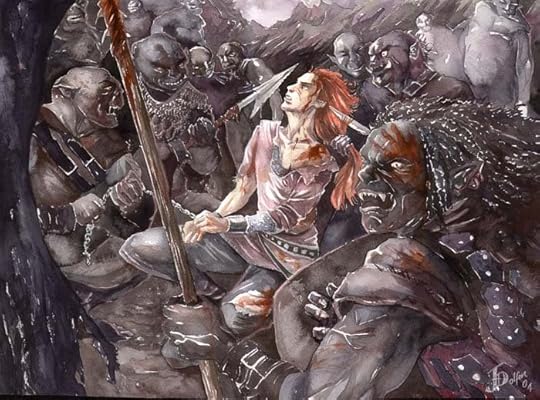
Adar is the Elven commander of the Orcs, and Adar is Elvish for “father.” During the First Age in the fight against Morgoth, many Elves were taken captive and endlessly tortured by Morgoth. The first Orcs were Elves corrupted by Morgoth so entirely that they turned into these creatures. Many Elves who didn’t turn became thralls of the Dark Lord. I speculate that Adar is one of the first thralls of Morgoth and assisted the Dark Lord in transitioning his kindred into Orcs. Thus he is named Adar, Father of the Orcs.
Gurthang was responsible for the death of many high-ranking generals in Morgoth’s army, so what better retribution than using their ancestors’ weapons to conquer the Southlandlers?
From there, let’s move across Middle-earth to the Misty Mountains. Or rather the Mines of Moria beneath those mountains. This storyline is probably what defenders of Tolkien are the angriest about (at least so far as I have read).
Mithril was already a known commodity by this time in history (in fact, they even found it on Númenor), so the discovery and hiding of it in the show seem strange; despite that, it makes for an entertaining storyline. Where the showrunners are following is that the Elves and Dwarves entered a partnership toward the end of the Second Age, and they made the Rings of Power together (with influence from Sauron) using Mithril. Celebrimbor even built the Gates of Moria (where the Fellowship enters Moria during “The Fellowship of the Rings.” That’s why they need an Elvish word for Friend to enter a Dwarven mine) and infused Mithril into runes to lock and protect the mines from intruders.
The Dwarves and Elves didn’t have the most fantastic relations, so how they portray them is fine. Still, Gil-Galad, the Elvish King, was a great hero in The Silmarillion. He was the one who brought everyone together to fight against Sauron in the Last Alliance (The big battle in the prologue to the movie where Sauron is defeated). Unfortunately, the show makes it seem like Gil-Galad has some mysterious or devious ulterior motive.
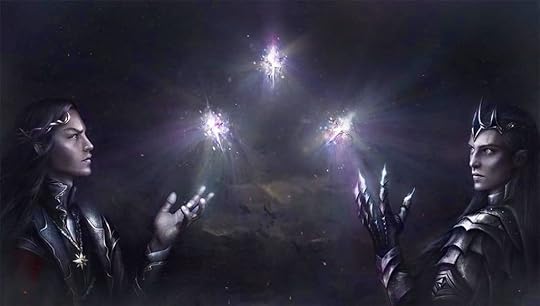
Don’t see what I’m saying? Well, he tells Elrond that without Mithril, the Elves will perish. That Mithril is actually from some fantastic story of an unnamed Elf fighting a Balrog on the Misty Mountains, and somehow the light of the Silmaril gets infused into Mithril. The Silmarils are a creation of Fëanor, a fiery Noldor elf who created them from the light of the trees of Valinor (they were the only light in the world before the Sun and the Moon were made). The Silmarils were what caused ALL the great wars in the First Age.
The only problem? That story never took place in Tolkien. In addition, the Elvish light doesn’t begin to diminish until the dawn of the Third Age. So one of two things is happening here, and neither is faithful to the source material. Either Gil-Galad is lying to Elrond about the history to get Mithril to create the Rings of Power (which, if this is the case, I guarantee it is because he has one of the Palantirí and is being corrupted by its visions which Sauron influences), or the showrunners are making him the enemy to elevate Elrond to power.
Lastly, let’s head to the West to Númenor.
As told in Akallabêth (the history of the Second Age and Númenor in The Silmarillion), Ar-Pharazôn forcibly married Queen Miriel to gain power. Once he did so, he became the Nero (meaning the Roman Emperor who played the fiddle while Rome burned) of Númenor.
I’ve already covered that Galadriel never went to Númenor in the source material (so the vision of her being the catalyst for the downfall of Númenor is false). Beyond that, Miriel never sailed to fight for the Southlands. I think the showrunners are doing this to avoid an uncomfortable theme of Pharazôn forcing himself on Miriel, and quite frankly, I’m happy with this decision.
My more significant issue is actually with a single character. Isildur is a spoiled brat in the show. They are making him that way because they want to give him a redemption arc, but it’s just poor writing. Isildur was a young, impressionable man enamored with the history of the world. He trusted his father and the elves so much that he risked his life to save the seed of Nimloth, the descendant of the trees of Valinor (the same Trees the Silmarils were created to emulate).
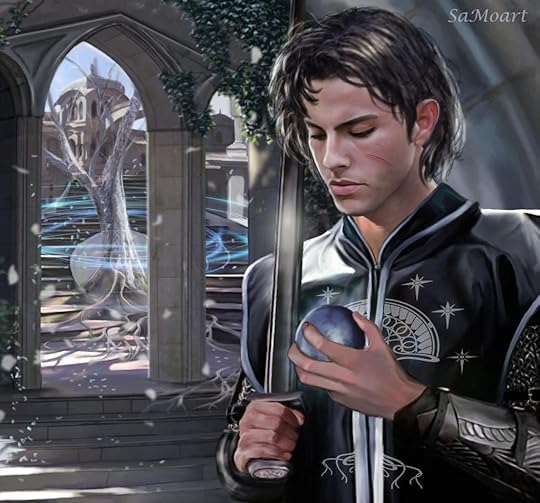
The redemption arc is not an issue in and of itself, but Hollywood (even though this is Amazon Studios) has the propensity to give a massive angle for all characters. What I miss is having a character (like Legolas or Gimli in the movies) who is just a good character who doesn’t need redemption for what a douchebag they used to be.
I want to highlight these differences in honor of the core material, but I also want to say that I love the show so far. The storylines may be diverging, but the sets and the world-building are spot on for how I imagine everything looking at this time in Middle-earth.
One last thought. The Dwarves delved too deep into the Second Age, looking for Mithril. Instead, they woke a Balrog from the First Age, and that Balrog destroyed Khazad-Dûm. What does that mean? We’re going to see a Balrog soon!
Join me next week as we dive back into the source material and cover the first portion of “Of the Rings of Power and the Third Age.”
November 17, 2022
Blind Read Through: J.R.R. Tolkien; The Silmarillion, Akallabêth, Conclusion
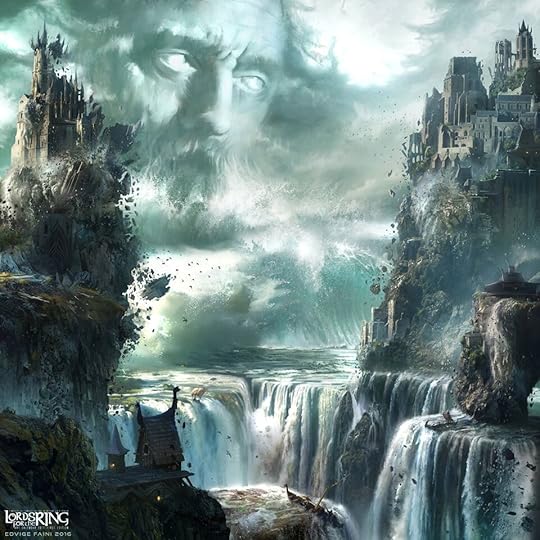
“And there is not now upon Earth any place abiding where the memory of a time without evil is preserved. For Ilùvatar cast back the Great Seas west of Middle-earth, and the Empty Lands east of it, and new lands and new seas were mande, and the world was diminished, for Valinor and Eressëa were taken from it into the realm of hidden things.“
Welcome back to another Blind Read! This week we delve into the end of Númenor as we conclude Akallabêth.
We left off last week with the Númenóreans burning down Nimloth, the White Tree from Valinor. The tree’s destruction was to indicate the downfall of the Númenórean race because of the evil influence of Sauron and Melkor.
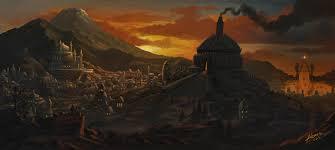
“Now madness and sickness assailed them; and yet they were afraid to die and go out into the dark, the realm of the lord that they had taken; and they cursed themselves in their agony.“
The Númenóreans suddenly became quick to anger, and there were many killings of people who rebelled against the strength of Númenor. For years it “seemed to the Númenóreans that they prospered, and if they were not increased in happiness, yet they grew more strong, and their rich men ever richer.“
I had previously compared Númenor to the Roman empire, and I think this is a great example. The Roman empire grew so big and grand that, for years, it was eating itself from the inside. What started as a republic became a monarchy with a single person with ultimate power. With that ultimate power comes hubris and selfishness, leading to civilizations’ downfall.
This is what happened to Númenor. They were angry with the Valar and the Eldar because the Númenóreans were mortal, despite their abnormally long lives. They held onto that anger, letting pride get in the way. They grew more intelligent and advanced than the people of Middle-earth, and they were the only culture able to capture Sauron.
But Ar-Pharazôn thought they captured Sauron because of how mighty Númenor had become. This misled confidence led to Sauron becoming an advisor to the king, creating the domino effect that ultimately killed off the culture.
The Númenoreans became “fierce men of war,” and Pharazôn “grew to the mightiest tyrant that had yet been in the world since the reign of Morgoth, though in truth, Sauron ruled all from behind the throne.”
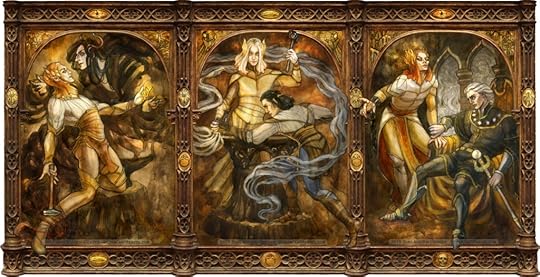
He ruled that way for years, with Sauron as his closest advisor, until he began “walking under the shadow of death.” Pharazôn was mortal, and it was only a matter of time before his body gave out. Still, Sauron’s words ate at him: “The Valar have possessed themselves of the land where there is no death; and they lie to you concerning it, hiding it as best they may.”
Pharazôn became an outspoken detractor of the Valar and a supporter of Morgoth, so he made it known that he was going to sail to Valar to discover their secret of immortality and take it for himself.
The faithful learned of this, and Amandil, Elendil’s father and Isildur’s grandfather, chose to follow in his ancestor’s footsteps. He would sail to Valinor as Eärendil did and warn the Valar about the impending attack, hoping for clemency for the rest of Númenór. Eärendil did so with the Noldor at the end of the First Age, and Amandil was hoping for the same in the Second Age, but “Men could not a second time be saved by any such embassy, and for the treason of Númenór, there was no easy absolving.”
Amandil was never heard from or seen again. In response, Elendil and the faithful loaded up on their ships to be ready for anything to come. “Many things there were of beauty and power, such as the Númenóreans had contrived in the days of their wisdom, vessels and jewels, and scrolls of lore written in scarlet and black. And Seven Stones they had, the gift of the Eldar; but in the ship of Isildur was guarded the young tree, the scion of Nimloth the Fair.“
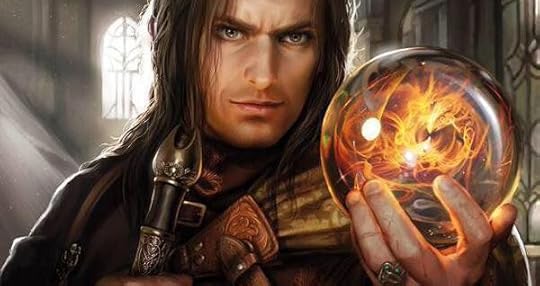
Hearing nothing from Amandil and seeing a change in weather, they decided to sail west to Middle-earth and leave Númenor behind. Notice that the Seven stones were the Palantirí, and the descendant of the great Trees of Valinor was with them.
Pharazôn had already set sail when Elendil and the faithful left, and because of the great Eagles of Manwë, the Valar knew the Númenórean fleet was on their way.
“Then Manwë upon the Mountain called upon Ilúvatar, and for that time the Valar laid down their government in Arda. But Ilúvatar showed forth his power, and he changed the fashion of the world; and a great chasm opened in the sea between Númenor and the Deathless Lands, and the waters flowed down into it, and the noise and smoke of the cataracts went up to heaven, and the world was shaken. And all the fleets of the Númenóreans were drawn down into the abyss, and they were drowned and swallowed up forever.“
Pharazôn made it to Valinor but was “buried under falling hills.” and the great wave created by the chasm Ilúvatar generated wiped Númenór from the face of the Earth. It was the event known as The Drowning of Númenór.
Sauron was caught in the catastrophe, and we would hope that would end him, but he is Maiar, the immortal servant to the Valar. “Sauron was not mortal flesh, and though he was robbed now of that shape in which he had wrought so great and evil so that he could never again appear fair in the eyes of Men, yet his spirit arose out of the deep and passed as a shadow and a black wind over the sea, and came back to Middle-earth and to Mordor that was his home. There he took up again his great Ring in Barad-Dûr, and dwelt there, dark and silent, until he wrought himself a new guise, an image of malice and hatred made visible; and the Eye of Sauron the Terrible few could endure.”
Thus the Second Age ends with another significant shift in the world, and another Dark Lord conquered with the help of Iúvatar.
There is only one more chapter in The Silmarillion, and it’s one that most people would look forward to more than anything that came previously. The title? “Of the Rings of Power and the Third Age.”
Join me next week (Thanksgiving!) as we review Episode 5 of The Rings of Power before jumping back into this last chapter!
November 10, 2022
Blind Watch: The Rings of Power; Episode 4, The Great Wave
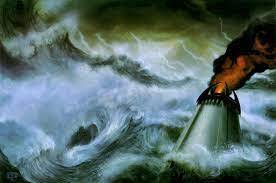
“And if the Elf were here now, what would she see? Men of Númenor? Or a gaggle of mewling children? We are sons and daughters of the Edain. Of Elros Tar-Minyatur, whose house conquered Morgoth himself. But now one Elf, a castaway, could threaten us? Look down, each of you, at the Gilcrests you bear, a heritage of mighty hands. Of men who laid the sea wall, who raised Armenelos, triumph of our civilization. But now one Elf could threaten us? My friends! Trust in me. For by the calouses of my hands, I swear that elven hands will never take Númenor’s helm. She will remain as always a kingdom of men!”
Welcome back to another Blind Watch! We’re back this week with Episode 4 of The Rings of Power, “The Great Wave.”
This episode has some incredible imagery and is terrific to watch, but it is the furthest from Tolkien’s original works than any previous episodes.
The show starts with a vision of the Palantirí, where Míriel sees a vision of the drowning of Númenor. It’s a portent of things to come, and the event is, in truth, what ends the dynasty of Númenor, but the showrunners are playing a bit here to give us more drama and add to their storyline.
Míriel tells Galadriel later in the episode that through her vision of the Palantir, she knows that the beginning of the fall of Númenor comes when Galadriel appears in Númenor. The issue with this is that I have not read anything in Tolkien yet that has Galadriel going to Númenor in the first place. The history of the fall of Númenor comes because Pharazôn forced Míriel, his first cousin, to marry him so he could take the crown. Over time he captured Sauron who became a consultant. Sauron eventually corrupted him and influenced him to sail to Valinor to step on that sacred ground.

Númenor named the Land of Gift because Ilùvatar (read that as God) gave the land to the Númenoreans as a gift for Eärendil and Elwing’s sacrifice in stopping Morgoth. He and the Valar (read Valar as Angels) laid a rule down that Men (read that as Humans) were never to sail to Valinor. Ar-Pharazôn, in his foolishness, decided he was above God. As penance, Ilùvatar washed the island of Númenor and its entire fleet away into the sea and buried Pharazôn and the men. These greedy men who took a step onto Valinor were interred under a landslide, buried forever, and forgotten.
Despite that inaccuracy, I love the way the show is framing Pharazôn. He has a dialogue with one of the characters early in the episode where he speaks of being a statesman and how to talk to the common folk. His big speech is what opens this essay, and that speech ends with raucous cheering. It shows how he positioned himself through politics and statesmanship into power. I’m a little disappointed that the showrunners decided against him forcibly marrying Míriel to take the ultimate control. Still, it appears they will work around that by having Míriel go to Middle-earth to fight against Sauron. I imagine he will take power while she is away and Tar-Palantir (Míriel’s father and King) dies.
We switch to the Humans in the Southlands, escaping to a tower to get away from the Orcish scourge. However, the humans are in danger because they need food, and foraging in the lands hasn’t gotten them enough. Theo, the son of the woman trying to take charge of the encampment, comes up with a bright idea to raid the village to get food. He sneaks out, thinking that the sword hilt he found will help him against the Orcs, and with the help of his friend, they try to get food and save the town.
Predictably Theo wants to go “just one more place” like a child trick or treating on Halloween night. Clouds roll in and cover the sun, and the Orcs come in. Theo takes out the sword, which gets its power from his blood. He sticks the hilt into his skin, and it forges a blade he uses to fight off the Orcs.
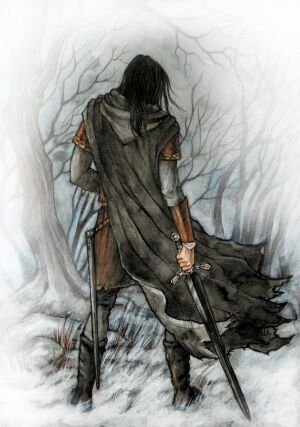
I’ve not read of any blade in Tolkien that uses blood for power (or at least I don’t remember if I did). So my first inclination is to assume this is Gurthang, which was Túrin Turambar’s blade.
This history of the blade was that Eöl, the Dark Elf, forged it as Anglachel. Years later, Beleg Strongbow requested it to assist in defense of Túrin. Through their adventures, Túrin accidentally killed Beleg with Anglachel, and Túrin had it reforged into Gurthang.
Túrin used the sword to kill Glaurung, the King of dragons and one of Morgoth’s Captains, and eventually killed himself with it.
So why would I think that the blade Theo has would be Gurthang? Because the sword had a mind of its own. It spoke to Túrin, and there are many passages in which the sword would ask for action and blood. None, however, as apropos as when Túrin asked the blade if it would kill him quickly:
“Yea, I will drink thy blood gladly, that so I may forget the blood of Beleg my master, and the blood of Brandir slain unjustly. I will slay thee swiftly.“
I think it’s possible that a sword with that history with some sentience could have ended up broken and corrupted by Sauron over the years. Of course, this is a theory based on the history of The Silmarillion, but it seems like this is the kind of thing that the showrunners would do.
Lastly, we go back to Durin and Elrond and find the dwarves mining Mithril. The showrunners try to make many events fit within the show’s timeframe, but dwarves found Mithril in Khazad-dûm in the First Age, not the Second Age as the show is trying to present.
Khazad-Dûm was the only place in Eä to find Mithril, and it was in the Third Age (Between the events of the Hobbit and The Fellowship of the Rings) that the Dwarves delved too deep and woke the Balrog, who eventually destroyed all the mines of Moria.
Though the timeframe doesn’t match, I hope to see a Balrog in this show in a more prolonged battle sequence than we saw in the movies.
At any rate, next week, we’ll come back for the conclusion of Akallabêth before breaking down Episode 5 of The Rings Of Power!
November 3, 2022
Blind Read Through: J.R.R. Tolkien; The Silmarillion, Akallabêth, Part 3
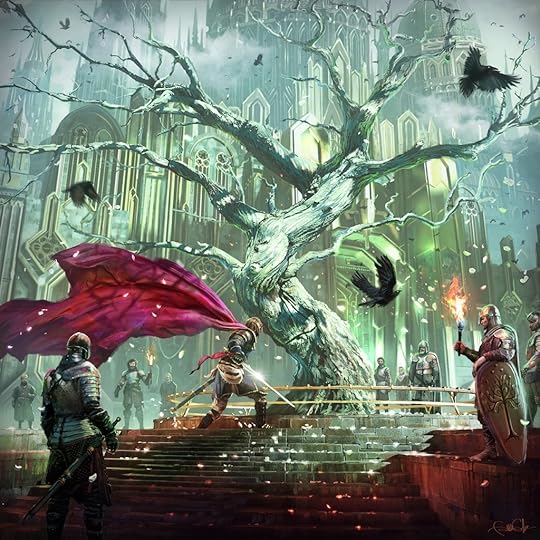
“Then behind locked doors Sauron spoke to the King, and he lied, saying: ‘It is he whose name is not now spoken; for the Valar have deceived you concerning him, putting forward the names of Eru, a phantom devised in the folly of their hearts, seeking to enchain Men in servitude to themselves. For they are the oracle of this Eru, which speaks only what they will. But he that is their master shall yet prevail, and he will deliver you from this phantom; and his name is Melkor, Lord of All, Giver of Freedom, and he shall make you stronger than they.’“
Welcome back to another Blind Read! This week we continue on our journey in Númenor and watch as the once-great empire begins to collapse.
We left off last time with the fact that the Valar were angered at Númenor and cut off ties with them. The lack of Valar support didn’t affect the mainland, but some were still faithful to the Valar and the Eldar, and they lived in a kingdom on the western shores in a city named Andúnië. The Men (read that as humans) who lived there “were of the line of Elros, being descended from Silmarien, daughter of Tar-Elendil, the fourth King of Númenor.” It was this line of Elros’ goal to unite the people of Middle-earth instead of trying to rule over them like the rest of the Númenóreans. In fact, Aragorn is a descendant of the Andúnië, and it’s his shame of what the Númenóreans eventually did that made him stay away from the crown for so long.

Years passed, and King begat King, until the beginning became the beginning of the end. Then, Tar-Palantir took the scepter and became King. He took an Elvish name (his Númenórean name was Inziladûn), and for the first time in years, a King of Númenor had used the dialect of a race the Númenóreans had begun to hate. He was a seer, so he took the name of the Palantirí, the seeing stones. One of his prophecies was that when the great “White Tree perished, then also would the line of the Kings come to its end.“
Tar-Palantir tried to bring back the old ways, but it was too little, too late. His daughter took to the throne after he died, “whom he named Míriel (whom you might know as the Queen Regent if you watch The Rings of Power on Amazon) in the Elven tongue.” But her first cousin Pharazôn was power hungry and hated the Valar for forsaking them, so he “took her to wife against her will, doing evil in this and evil also in that the laws of Númenor did not permit marriage, even in the royal house, of those more nearly akin than cousins in the second degree.”
Ar-Pharazôn became the most guilded of all kings to rule Númenor…and the proudest. His men told him that Sauron was building strength in the East, and in his hubris, he sent a contingent of men to capture Sauron. But the Dark Lord outwitted the Golden King and waved the white flag. So Ar-Pharazôn took him captive in Númenor, thinking he would keep the enemy close.
“Yet such was the cunning of his mind and mouth, and the strength of his hidden will, that ere three years had passed he head become closest to the secret councils of the King.“
The men of Númenor began to fall under Sauron’s sway, “save one alone, Amandil lord of Andúnië.” Of the Line of Aragorn. The men of this line remained faithful to the Valar and the Eldar, but the rest of Númenor “named them rebels.“
The quote which opens this essay is one of the examples of the cunning of Sauron. He twisted history and played upon the Númenórean beliefs, making them believe that Melkor was the true Lord and not Ilúvatar (also named Eru, as seen above). But, unfortunately, because of the pain of the Valar rejection and their own belief that they are better than any other race, the half-truths of Sauron rang true to them, and “Ar-Pharazôn the King turned back to the worship of the Dark, and of Melkor the Lord thereof, at first in secret, but ere long openly and in the face of his people; and they for the most part followed him.”
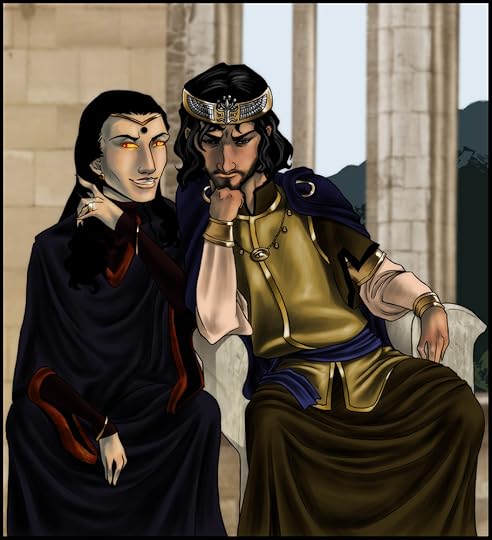
With this belief in the Dark Lord, Ar-Pharazôn threw Amandil, the Elf-friend of Andúnië and out of his council. But Amandil, along with his son Elendil, were the most significant ship captain of Númenor, so they were kept in Númenor, despite their outward rejection of the worship of Melkor.
While shunned, Amandil heard that Sauron had advised Pharazôn to cut down Nimloth, the white tree. Knowing of Tar-Palantir’s prophesy, he gathered his son Elendil and his grandchildren Isildur and Anárion. He told them the tale of the Trees of Valinor and the glory of the Valar.
“…Isildur said no word, but went out by night and did a deed for which he was afterwards renowned.”
Young Isildur went to Nimloth and stole its fruit. The guards gravely injured him, but he managed to escape and bring the fruit to his Grandfather, who planted it in secret. Upon its first bloom, Isildur was miraculously healed, showing the power of the Valar.
Soon after, the new tree bloomed just in time because “the King yielded to Sauron and felled the White Tree, and turned wholly away from the allegiance of his fathers.”
Ar-Pharazôn ordered that a gilded tower be turned into a fire altar and burned Nimloth so that “men marveled at the reek that went up from it, so that the land lay under a cloud for seven days, until slowly it passed into the west.“
“Thereafter the fire and smoke went up without ceasing; for the power of Sauron daily increased, and in that temple, with spilling of blood and torment and great wickedness, men made sacrifice to Melkor that he should release them from Death. And most often from among the Faithful they chose their victims.”
The Doom of Númenor has begun. Join me next week as we continue with Episode 4 of The Rings of Power and the week after when we return and complete Akallabêth!
October 27, 2022
Blind Watch: The Rings of Power; Episode 3, Adar
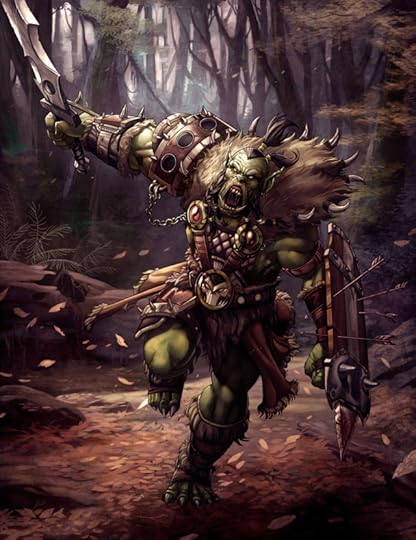
“If we didn’t do everything we weren’t supposed to do, we’d hardly do anything at all.“
Welcome back to another Blind Watch! This week we cover episode three of The Rings of Power, “Adar.”
Before we begin anything, I have to say how amazed I am at the show’s budget and their ability to capitalize on and make the show as beautiful as it is. Of course, there are problems with the narrative flow, as they are cherry-picking events from multiple different timelines, but they are keeping reasonably faithful to the character’s intent. That almost doesn’t matter when you get to see the beauty of Middle-earth and Númenor.
We are introduced to several characters you’ll know, even if you aren’t familiar with The Silmarillion or the Númenórean story. First, we meet Captain Elendil (which I’m pretty sure was never mentioned as a Captain in the book, but I’m still catching up) and his son Isildur, whom we all know from the Scene in The Return of the King where he cuts off Sauron’s finger and takes the One Ring from the Dark Lord.
It seems like the showrunners are forsaking that Andùnië (the city Elendil takes Galadriel to the library) was a major metropolis and a kingdom in its own right. Elendil was the ruler of that Kingdom on the western shores of Númenór.
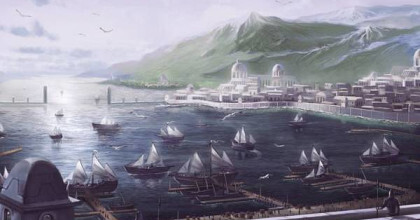
In the show, we see a mural of Elrond and Elros, brothers and sons of Elwing and Eärendil, in that library. If we remember from The Silmarillion, Eärendil and Elwing came to Valar and told of Morgoth’s reign, which caused the Valar to come to Beleriand and stop him. They broke the rules by going to Valar and are lauded as heroes for risking their lives to destroy Morgoth. As a reward, the boys had a choice of which line to follow because Elwing and Eärendil were descendants of both Elves and Men. Elros chose Men, and Elrond chose Elves.
There is an interesting scene where Elendil comes before the Queen Regent and states that his name means either Elf-friend or Star-lover. Eärendil becomes a star and rides a chariot across the sky as penance and reward for his transgressions, so Star-lover shows respect to Elendil’s ancestor. Because Elendil is a direct descendant of both Elwing and Eärendil, the Elf-friend translation of his name shows his willingness to bring both Elvenkind and Men together.
The Númenóreans seem like an evil group of people in the show, and they progressed that way because they believed they were better than anyone else. They had progressed to be more intelligent and advanced and yearned for long life. It seems like that would be at odds with The Lord of the Rings mythology, where they call Aragorn the last great Númenórean king. But in that case, it’s because Aragorn was a descendant of Elendil, the Elf-friend, and not of the Kings (or Tar’s), which took power and eventually caused the Drowning of Númenor.
And Speaking of the Drowning of Númenor, the show seems to be headed in that direction. The Queen Regent Míriel is indeed a true Queen of Númenor, daughter of Tar-Palantir, the seer. He is named after the Palantírí, the Seeing Stones which Fëanor created in Aman, and Elendil brought with him to Middle-earth when he fled from the Drowning of Númenor. Of course, everyone can remember Saruman with his twisted claw hovering over the stone, looking into the future tainted with Sauron’s corruption.
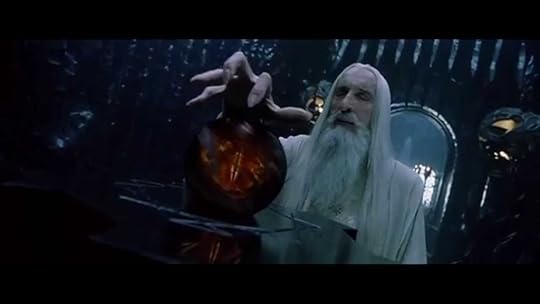
Back to Míriel. She was forced into marriage by Ar-Pharazôn, who was possibly the worst of the Kings of Númenor. I think this is where the show is headed, though I wonder if we will see Ar-Pharazôn as a character.
He sought to take over Middle-earth under the glorious banners of Númenor and force Sauron to bend his knee. However, it was Sauron who outwitted him. Sauron raised the white flag and surrendered without lifting a finger. Ar-Pharazôn took him into custody, thinking he had successfully created a kingdom of Eä (the world in which all the lands were in. Feel free to read that as Earth).
Over the years, Sauron corrupted Ar-Pharazôn to the point that he eventually became a council to the king. This led to the world’s downfall and caused the great wars of the Second Age.
Obviously, the show will speed this up, as they need to do so within the next six episodes. Still, I’ll be very interested in where they take this, as we’ve just touched upon the history of Númenor, which is the basis of the Current Blind read essays on one of the final chapters of The Silmarillion, “Akallabêth.”
We have two other storylines in this episode that don’t progress much, but one gives a deeper understanding of what is happening behind the scenes in the show. The other shows a broader sense of the progression of Middle-earth itself.
The first is Arondir’s storyline, which gives the episode its namesake. He awakens and finds that he’s a slave to the Orcs. They force a team of captives to dig tunnels when the prisoners realize that the Orcs are looking for something, not necessarily tunneling under the Earth. This hilt can only be what we saw the boy Theo hiding in the first and second episodes. The assumption is that they need the hilt to try and bring Sauron to power, but that all remains to be seen. We meet Adar at the very end as Arondir is concussed, and his vision is blurred. Adar comes in his point of view as a blurry Orc Captain.
The second storyline is Nori’s, and whom I can only guess are the originations of the shire folk, I.E., Hobbits. There is a mention in The Fellowship of the Rings that Hobbit’s used to be nomadic, but they settled down, and they are calm and gentle folk who don’t like adventures. Not only do their names (Brandyfoot and Proudfellow) match those of the Hobbits, but their demeanor does as well. After watching this episode, I’m doubling down on the “Stranger” that they found to be Gandalf. I’ve always wondered why Gandalf had a propensity for hobbits when danger was in the way and why he thought of them when he had a task. It may be that Nori is an ancestor of the Baggins clan, and Gandalf feels an affinity with her because she made sure he was safe.
The plot thickens, but it closely matches Akallabêth, so join me next week for a continuation of the Blind Read before we return for Episode 4 of the Rings of Power!
October 20, 2022
Blind Read Through: J.R.R. Tolkien; The Silmarillion, Akallabêth, part 2
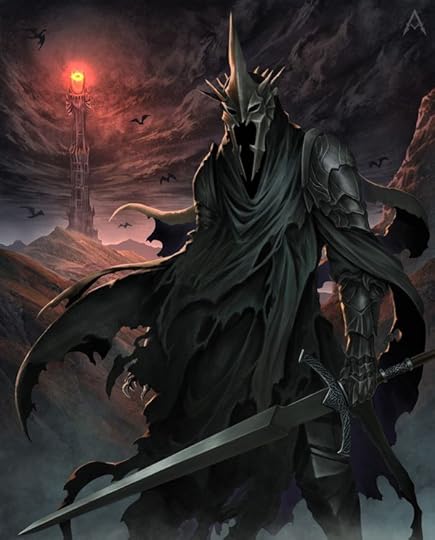
“In this Age, as is elsewhere told, Sauron arose again in Middle-earth, and grew, and turned back to the evil in which he was nurtured by Morgoth, becoming mighty in his service. Already in the days of Tar-Minastir, the eleventh King of Númenor, he had fortified the land of Mordor and had built there the Tower of Barad-Dûr, and thereafter he strove ever for dominion of Middle-earth, to become a king over all kings and as a god unto Men.“
Welcome back to another Blind Read! This week we continue the story of Númenór and watch as they create cancer within themselves, eventually leading to their demise.
We left off last time with the Númenóreans hitting landfall in Middle-earth, so they could hold to their word that they would not sail East towards Valinor.
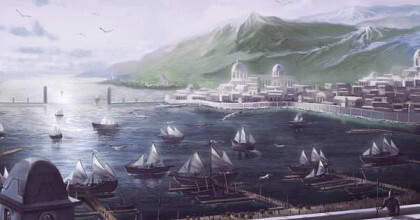
The people of Middle-earth “sat under the Shadow were now grown weak and fearful,” but the Númenóreans taught them to farm and trained them “in the hewing of wood and the shaping of stone.“
This enabled the people of Middle-earth to forget their ancestor’s transgressions and shed Morgoth’s taint. They revered the Númenóreans because of this and took them as godlike kings.
This power went to their heads. “And they said among themselves: ‘Why do the Lords of the West sit there in peace unending, while we must die and go we know not whither, leaving our home and all that we have made? And the Eldar die not, even those that rebelled against the Lords. And since we have mastered all seas, and no water is so wild or wide that our ships cannot overcome it, why should we not go to Avallónë and greet our friends?‘”
The sentiment of Hubris is central to the Númenórean downfall and the wars which would follow in the Second and Third ages. The Dúnedain thought themselves so great and powerful that they allowed their demise. There is a very close parallel with the Romans in the Númenórean storyline, and I have to wonder if Tolkien didn’t model their rise and fall after that ancient empire. We’ll touch on that more later.
 The Course of Empire. Destruction, 1836. Found in the collection of New York Historical Society. (Photo by Fine Art Images/Heritage Images/Getty Images)
The Course of Empire. Destruction, 1836. Found in the collection of New York Historical Society. (Photo by Fine Art Images/Heritage Images/Getty Images)Some heavy theology follows the above quote, which spans pages. It is Tolkien’s search for meaning between the godlike and the mortal. There is quite a bit of documentation that Tolkien eventually meant for these histories to progress into later ages, which would become our history, almost like alternate history and mythology to the real Earth. Because of this, we see this Theology in the struggle of suffering. Why do Men have to suffer and die when the Elves and Valar live eternally? These are surrogate Angels of our world, with Ilúvatar being God.
They go back and forth, showing the youth and entitlement the Númenóreans felt. Why shouldn’t they get to see Valinor and become undying like the rest? But the Valar argued with them, telling them they were given their own gifts; they were not allowed to have the gifts of the Valar and the Eldar.
The Númenóreans all believed this, so it wasn’t until Tar-Atanamir (King of the Dúnedain) that their quest for eternal life saw its first downfalls (which they were blind to) because “Atanamir lived to a great age, clinging to his life beyond the end of all joy; and he was the first of the Númenóreans to do this, refusing to depart until he was witless and unmanned.”
The curse they would keep was this obtuseness of desire. Instead, they would cling to power and life to the detriment of all else.
It was during this age that they built significant structures on the mainland. Many of the Númenóreans reveled in the worship they received from the men of Middle-earth, “and the power and majesty of their kings were increased; and they drank, and they feasted, and they clad themselves in silver and gold.”
Reading this passage, I couldn’t help but think of Denethor and his disgusting eating habits while Merry sang his lamentations.
But the Númenóreans had more power and prestige than Denethor, and it enabled Sauron to gain his own power. So it’s here in the book that we get this essay’s opening quote.
There are some confusing and contradictory passages here which I probably need to read a few more times to understand completely. Still, it seems as though Sauron was around and in the land building power and creating Mordor, and during the Númenórean King Tar-Minastir’s reign, he created the One Ring. It was a partnership between Tar-Minastir and Gil-Galad, the Elven King, which stopped his ascension to power. I hope to see what that struggle looks like in the last chapter of The Silmarillion, “Of the Rings of Power and the Third Age.”
His fear and hatred of them grew through his exposure to the Númenóreans. “Yet Sauron was ever guileful, and it is said that among those whom he ensnared with the Nine Rings three were great lords of the Númenórean race. And when the Úlairi arose that were the Ring-wraiths, his servants, and the strength of his terror and mastery over Men had grown exceedingly great, he began to assail the strong places of the Númenóreans upon the shores of the sea.”

Because of this struggle against Sauron and their own Hubris, the Númenóreans continued their segregation from the Eldar and Valar. It was years and numerous Kings later when they stopped taking Elvish names and stopped tending the White Tree. They didn’t strike out against the Eldar but punished those of their ranks who sympathized with the Eldar. The Valar saw this, and they “gave them counsel and protection no more in their wroth.”
Tolkien does something exciting here. It’s the telling of the rise and fall of civilization over age, but he tells it so simply that it feels like one event after another leading to their eventual fall. But these events are slow-moving, and little things happen during the reign of each of the Númenórean great Kings. Of course, Sauron was around in Middle-earth during this time. Still, his influence was slight, mainly because of the impact of Gil-Galad, but also because he was interested in building up his great fortress, much like his Valar master, Morgoth.
There was no nail in the coffin for the Númenóreans, which makes this history so believable. Great empires can withstand a single significant event. What they cannot resist is years of degradation from the inside. The Númenórean pride and hatred lead them down a path of righteous death.
These people lived hundreds of years, and we’re up to the 24th King of Númenór, and we haven’t even gotten to the linchpin event, which caused the eventual downfall. Tolkien is taking his time, creating an environment within Númenór that will allow this linchpin event to happen.
So join me next time when we see what that event is as we continue on the story of Akallabêth!
October 13, 2022
Blind Watch: The Rings of Power; Episode 2, Adrift
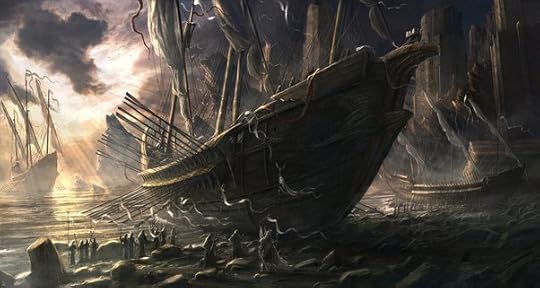
“No! This is different. He could have landed anywhere and he landed here. I know it sounds strange but somehow I just know he’s important. It’s like there’s a reason this happened, like, I was supposed to find him. Me. I cant walk away from that, not, until I know he’s safe. Can you?“
Welcome to another Blind Watch! This week we delve back into Amazon’s realization of Middle-earth with the second episode of “The Rings of Power.” Be warned now! This blog is meant to be read after watching the episode. There are heavy spoilers and explanations of the episode, so please watch before reading!
This episode, “Adrift,” follows a stranded Galadriel in the middle of the sea. Arondir as he searches for the root of the plague. Nori Brandyfoot finds a mysterious giant and tries to befriend him. Then lastly, Elrond brings us to see the Dwarves of Khazad-Dûm.
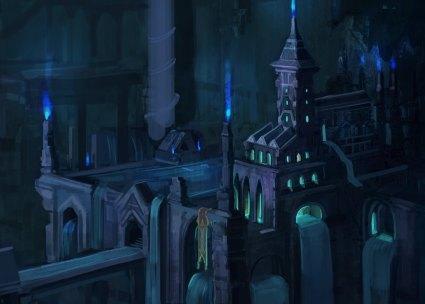
Though the title is a metaphor for all the characters and the uncertainty of what is to come, let’s begin with the most apparent message and cover Galadriel.
A group of shipwreck survivors finds her floating in the ocean. A creature they call the worm attacked them, which is some giant sea creature. It harasses them and breaks up their flotilla, leaving only one survivor after its destruction. However, Galadriel does see (with her elf eyes) some spear impaled into its tail fin. I’m sure there is a significance that I’m missing at the moment, but it’s something to remember moving into future episodes.
In the Silmarillion, many creatures remained undescribed and grew in the darkness of Middle-earth. They were creatures of Morgoth’s creation because he corrupted the land. I believe that this sea creature, this “worm,” is one of those creatures, and it’s fun to see what the imaginations of Amazon can come up with because they have such an open slate.
The last survivor, Halbrand, lets Galadriel know that Orcs destroyed his home, Orcs that were supposed to be gone from the region. Instead, we find that the Orcs come from the Southlands, which we already know from Arondir’s storyline. Eventually, they are seen by someone on a ship, who undoubtedly is a Númenórian.
Moving back to Arondir’s storyline, he heads to the Southlands and finds a city that has been destroyed from beneath. The scourge is Orc that has tunneled underneath the earth and popped up to sack the city. He and Bronwyn find enough evidence to realize that Bronwyn’s town is in danger. They head back to find that Orc’s have come from underneath, and there is a fun fight scene towards the end of the episode where they fight and kill one of the orcs.
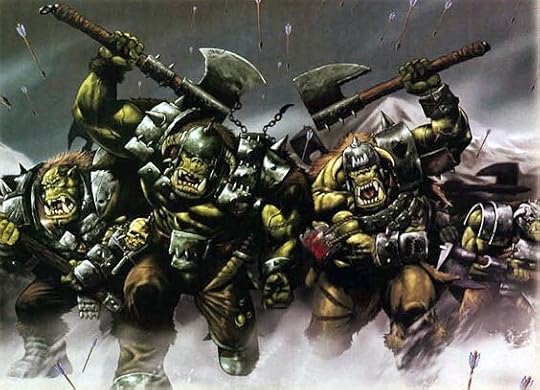
The mystery here is Theo, who is Bronwyn’s son. He has a sword hilt with Sauron’s mark on it, and the question is, where did he get that hilt? Could Theo be Halbrand’s son? Could the mysterious broken sword have come from a previous battle where Sauron was defeated? We are led to believe that Sauron’s armies heeded the call of the sword hilt, so all those questions remain to be answered.
Elrond’s storyline is the least impressive of the episode and takes up most of the run time. However, the whole point of the storyline is a setup for the rings of power in general. Elrond meets up with Celebrimbor, the premier elvish smith who wants to create something spectacular. However, he somehow lacks the ability, so Elrond takes him to visit his “friend” (speak friend and enter) Prince Durin. The goal is to get Prince Durin and Celebrimbor together to create what can only be the Rings of Power. There is also a decent amount of back and forth about Dwarvish/Elvish relations, which will only enrich the later storylines.
The final storyline is, to me, the most interesting and is represented by the quote at the beginning of this essay. It follows Nori, who is a precursor to the Third Age Hobbits we know and love (based upon the name, I have to imagine she is a descendant of the Proudfoot and the Brandywine Hobbit lines).
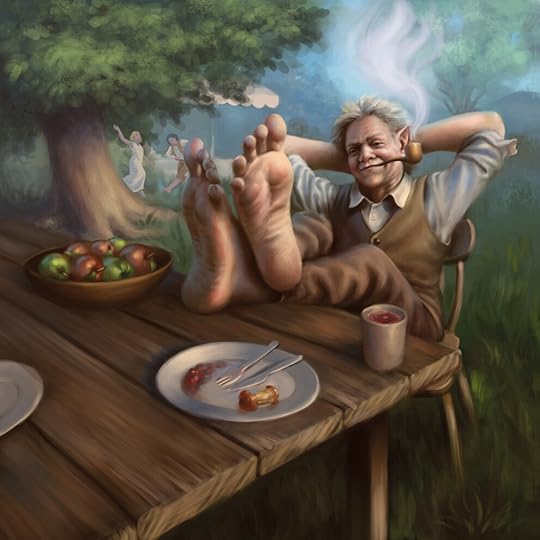
Nori finds the mysterious giant who has some magical powers. I think the showrunners are taking a little more creative license here because I believe this being is a Maiar named Olórin, otherwise known in Middle-earth as Gandalf.
The Maiar are basically celestial beings, second only to the Valar, and indeed are servants of the Valar (Morgoth is and was Valar, and Sauron is his Maiar adjutant). The Istari were a sect of Maiar “wizards” sent to Middle-earth to assist the people against Sauron’s deception and armies. At the end of the first episode we see this giant being shot down to the earth like a meteor, and spends the majority fo the second episode trying to learn speech, and to understand his magic.
That follows with the general storyline of The Silmarillion, but the only issue is that the Istari were all sent in the Third Age, not the Second Age, so the showrunners are ignoring some history of Middle-earth here to work to make a better and more fluid show.
The whole of what I know about the Second Age comes from Akallabêth, which I’ve just finished, and we’ll get a Blind Read over the next few weeks to complete it. The issues I see here are that in the Second Age, Sauron worked his silver tongue to fool the great kingdoms of Middle-earth. He became a consultant of the Númenórians and created distrust from the inside rather than fighting them directly.
Sauron’s real story may still be the case in the show because we are just getting to Númenor in the next episode, but because there are already armies of Orcs fighting, and no one seems to know where Sauron is, I don’t think this is the direction they’re going.
It also is a complete divergence for Galadriel’s character because she was a fighter, but at this point in history, she was married to Celeborn and living peacefully, but there is no mention of him in the show. It was Morgoth who killed her brother, not Sauron, so her motivation has changed entirely.
Despite all that, it’s fun to be back in Middle-earth on screen, and I can’t wait to see their take on Númenor!
Join me next week as we continue with Akallabêth. We will switch back and forth between Blind Reads and Blind Watch every week for the next few weeks, as the last two chapters in the Silmarillion pertain to what is happening in “The Rings of Power.”



